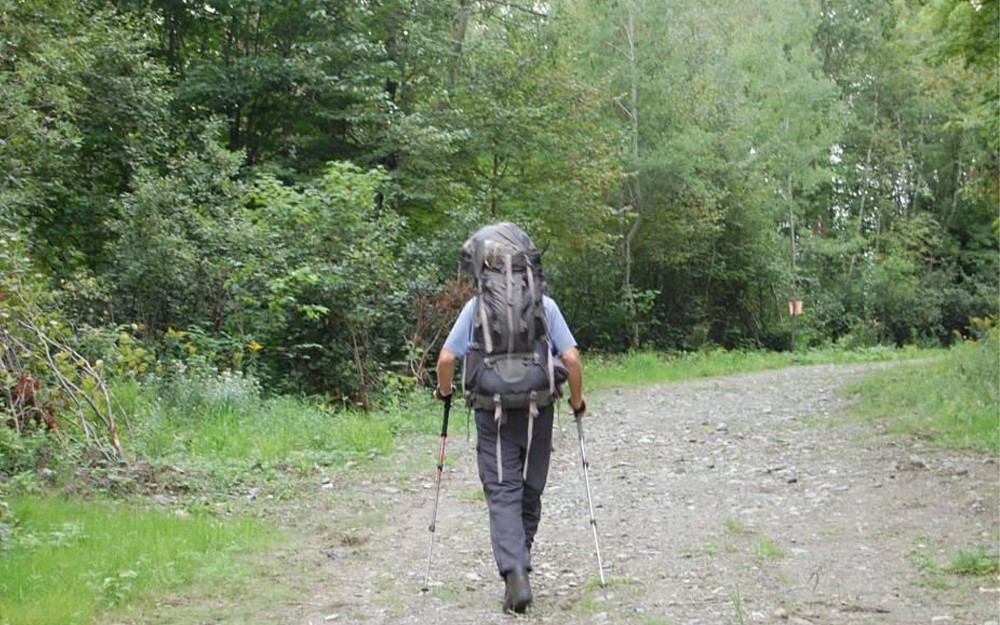
Patient Completes Appalachian Trail After AAA Repair
In 1965, Kenneth Bordwell started what became a lifelong quest to hike the entire Appalachian Trail, a 2,180 mile trek through the wilderness that passes through 14 states between Georgia and Maine. He thought that dream was dashed whenat age 67 and about 100 miles shy of his goalhe was diagnosed with an abdominal aortic aneurysm (AAA), a life-threatening weakness in the wall of the aorta, the bodys primary artery and source of blood flow.
Physicians call abdominal aortic aneurysms (AAA) "silent killers because they often go undiagnosed until they rupture. About 50 percent of people with a ruptured AAA survive. An estimated 1.2 million Americans are living with AAAs, leading to 15,000 deaths annually.
Men age 60 or older who have smoked at least 100 cigarettes during their lifetime are at the highest risk for developing an AAA.
"I had heard of an aortic aneurysm, but I didnt know much about them. I certainly never expected to have one, but I soon learned I was right there in that high-risk category, says Bordwell, now 70 and a former smoker.
Vascular problems occur when fat and cholesterol (plaque) build up on artery walls. As plaque increases, the arteries harden and become narrow. In the aorta, this can cause the vessel to stretch and weaken, forming a bulge in the vessel wall. Left untreated, AAAs can burst unexpectedly, making the condition the third leading cause of sudden death in men over age 60.
"This condition is one of the most preventable causes of death, but are highly treatable and curable in 95 percent of men and women. The key is detecting them before the rupture occurs, which is why adequate screening is so important, says Joseph Giglia, MD, a UC Health vascular surgeon and associate professor at the University of Cincinnati College of Medicine.
Bordwell considers himself lucky: His AAA was detected in 2008 through an imaging test related to another condition. Hed never had an AAA screeningin fact, he didnt know he needed one. Radiologists noticed the bulge and immediately referred him to vascular surgery for evaluation. At the time, his AAA was stable so he was put on medical monitoring.
In late 2011, however, the AAA suddenly expanded to a tennis ball-sized bulge Giglia deemed the risk of rupture was greater than risk of the surgery to repair the aneurysm.
Giglia recommended a minimally invasive surgical approach using a stent graft (Endurant), manufactured by Medtronic, that creates a new path for blood flow to reduce pressure to the bulge and reduce the risk of rupture. Bordwell had his surgery at UC Health University Hospital in December 2011.
Less than a year after his AAA repair, Bordwell spent two weeks hiking the last 98 miles of the Appalachian Trail he had not yet seen.
"I certainly didnt hike fast I felt my age (70), but that had nothing to do with my vascular health. It was my bones and muscles that made me a slow hiker, Bordwell jokes. "Dr. Giglia made it possible for me to finish the trail, and Im thankful for that. I encourage all men over age 60 to get their AAA screeningit could save your life.
AAA Screening Information
AAA screenings are available through UC Health Vascular Surgery in Clifton and West Chester. For appointments, call 513-558-3700.
The test is done using ultrasound, a technology that uses sound waves to create a picture of organs and other structures inside the abdomen. If vascular problems are found, the patient may be referred for additional screening exams to determine the best course of treatment.
New Medicare Part B health insurance enrollees are eligible for a preventive abdominal aortic aneurysm screening. Upon completion of a physical examination, which is mandatory for new Medicare patients, male patients who have smoked at least 100 cigarettes during their lifetime and anyone with a family history of vascular disease can request the abdominal aortic aneurysm screening exam.

Kenneth Bordwell had an endovascular abdominal aortic aneurysm repair.

Joseph Giglia, MD, demonstrates how a stent graft is used to address an abdominal aortic aneurysm.
Related Stories
Can new rules in Ohio address a pharmacy staffing shortage and...
May 17, 2024
The University of Cincinnati's Michael Hegener joined WVXU's Cincinnati Edition to discuss recent rules released by the Ohio Board of Pharmacy designed to address pharmacy staffing.
Is ketamine the answer to treatment-resistant depression?
May 16, 2024
The University of Cincinnati's Stephen Rush joined WVXU's Cincinnati Edition to discuss the use of ketamine and esketamine to treat treatment-resistant depression.
UC study: Severe ischemic strokes rare in total patient...
May 15, 2024
The University of Cincinnati’s Yasmin Aziz will present research at the European Stroke Organisation Conference that found severe ischemic strokes with the most severe damage are rare in the total stroke patient population.
